| |
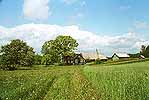 |
General Views
Here are all the beautiful pictures I couldn’t put anywhere else, landscapes so fine that they resemble the
Windows XP wallpaper, storks, evening mist, flowers and houses.
|
| |
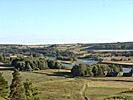 |
Kernave, Lithuania’s First Royal Castle
Lithuania’s first royal castle was situated in Kernave, some distance outside Vilnius. King Mindaugas built
it in the 13:th century, but there has been a fortification there since 1000 BC. Today the buildings are nothing
more than grassy castle-hills.
|
| |
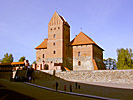 |
Trakai, Lithuania’s Second Royal Castle
The medieval castle Trakai, situated in the middle of Lake Galve a few kilometres outside Vilnius, is the pride
of Lithuania. It was the hub of the Grand Duchy of Lithuania under Grand Duke Gediminas.
|
| |
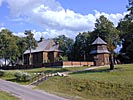 |
Paluse in Aukstatija
The most touristy place in the country’s eastern part in Aukstatija National park (the Higlands), having
the country’s oldest wooden church. We also saw a wedding here, yessir. Those interested in headwinds can rent
rowboats and exhaust themselves on the Luse lake (Paluse = At [lake] Luse).
|
| |
 |
Beekeeper’s Museum in Aukstatija
Eh? A beekeeper’s museum? Some bees on pins in a box, different types of buzzing perhaps, I thought, and nearly
missed a high-ranking art collection. Beehives don’t have to be square boxes. They can just as well be works of
art, or monsters.
|
| |
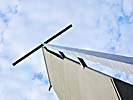 |
Ignalina in Aukstatija
A very futuristic church visible from far away, over the otherwise lowly buildings. Fantastic food prices. But
the nuclear power plant is not here. It is in Visaginas. See below.
|
| |
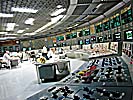 |
Visaginas in Aukstatija
The “nuclear village” by the Ignalina nuclear power plant, built in 1975, is very interesting. It is completely
Sovieticus. There is also a short-short guide to the power plant. It is impressive! Don’t let your
thoughts run away to Chernobyl. It is all wrong.
|
| |
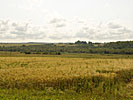 |
Zemaitija
Zemaitija, the Lithuanian lowlands, lies by the coast (zemes = low). The Zemaitijans are a different
kind of Lithuanians, sparing of words, using a dialect that is somewhat incomprehensible to a Vilnius resident.
It is an agricultural district with lots of hidden golden nuggets and surprising cathedrals. The food is potato-dominated:
the Zeppelin is an all-time high.
|
| |
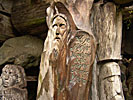 |
Orvydas’ Sculpture Museum in Zemaitija
Kazimieras and Vilius Orvydas, father and son, their Christian belief mixed with mysticism, has resulted in
a sculpture park with an exotic taste, a display of popular monumentalism. Orvydas were continuously burdened by
Soviet harassment for their belief, but they “won“ in the end. Today the park in Salantai is a place of pilgrimage.
|
| |
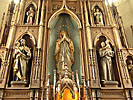 |
Salantais’ Cathedral in Zemaitija
The Zemaitians are cunning folks. Right in the middle of nowhere a giant cathedral pops up. It is the Church
of the Virgin Mary’s Ascension, a fantastic building worthy of a big city, stuck in this remote place among the
cows and haystacks.
|
| |
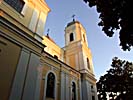 |
Other Cities and Villages
Some cities I have just quickly swept through. They are represented here. The image to the left shows the Moletai
Church, on the road between Utena and Vilnius.
|